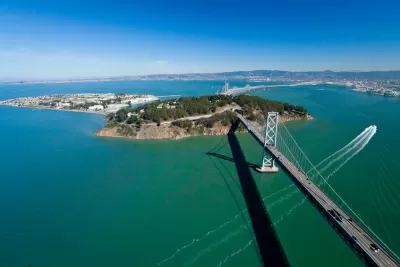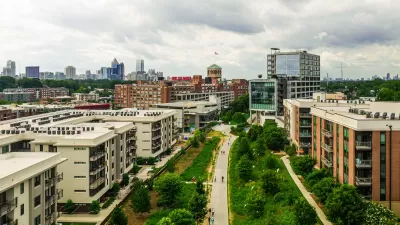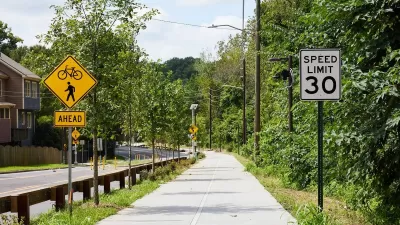Writing in the New York Times, Allison Arieff asks what happened to the great works of public infrastructure from years past that stand as today's monuments to America’s achievements.

The investment in infrastructure in America today is mostly spent on what Arieff describes as "deferred maintenance"—the road repairs, bolt replacements, etc. The bridges and tunnels and other infrastructure investments that really shaped a city seem to be a thing of the past, with stories about infrastructure largely focusing on cost overruns or the failure of existing construction.
Is the age of great infrastructure over? Perhaps not, as Arieff points out while focusing on Atlanta's BeltLine (the 22-mile transit greenway around the city of Atlanta) and the reinvestment and reimagination of the Los Angeles River—the concrete waterway that snaked through the city and has been largely ignored for decades.
Arieff places part of the responsibility for the lack of enthusiasm in new infrastructure at the feet of the policy peoples (including planners!) who are supposed to sell the benefits of such projects to the community.
…engineers, planners and policy makers tend to focus on wonky stuff like percentage of parkland per person. They’re awash in acronyms like V.M.T. (vehicle miles traveled), too reliant on planning terms like modeshare that don’t resonate with the general public. These things may be useful in measuring the metrics of a city, but they sure don’t get to the reasons people want to live there.
FULL STORY: What Happened to the Great Urban Design Projects?

Alabama: Trump Terminates Settlements for Black Communities Harmed By Raw Sewage
Trump deemed the landmark civil rights agreement “illegal DEI and environmental justice policy.”

Study: Maui’s Plan to Convert Vacation Rentals to Long-Term Housing Could Cause Nearly $1 Billion Economic Loss
The plan would reduce visitor accommodation by 25% resulting in 1,900 jobs lost.

Planetizen Federal Action Tracker
A weekly monitor of how Trump’s orders and actions are impacting planners and planning in America.

Waymo Gets Permission to Map SF’s Market Street
If allowed to operate on the traffic-restricted street, Waymo’s autonomous taxis would have a leg up over ride-hailing competitors — and counter the city’s efforts to grow bike and pedestrian on the thoroughfare.

Parklet Symposium Highlights the Success of Shared Spaces
Parklets got a boost during the Covid-19 pandemic, when the concept was translated to outdoor dining programs that offered restaurants a lifeline during the shutdown.

Federal Homelessness Agency Places Entire Staff on Leave
The U.S. Interagency Council on Homelessness is the only federal agency dedicated to preventing and ending homelessness.
Urban Design for Planners 1: Software Tools
This six-course series explores essential urban design concepts using open source software and equips planners with the tools they need to participate fully in the urban design process.
Planning for Universal Design
Learn the tools for implementing Universal Design in planning regulations.
Caltrans
Smith Gee Studio
Institute for Housing and Urban Development Studies (IHS)
City of Grandview
Harvard GSD Executive Education
Toledo-Lucas County Plan Commissions
Salt Lake City
NYU Wagner Graduate School of Public Service





























